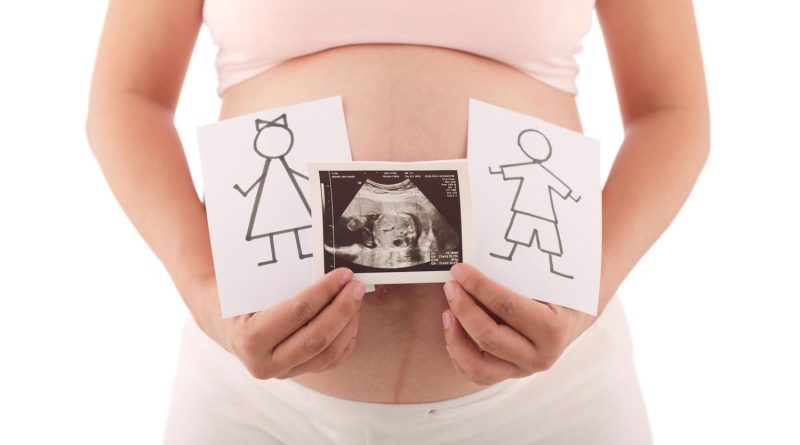4 myths about how to determine the gender of the future child
We struggled with the decision of whether or not to learn the sex of our unborn child for several weeks. What if that ruined the surprise? There are several folklore prediction techniques, even without undergoing a conclusive ultrasound examination to reveal the sex. But is there any science behind them?
Myth 1: Having a son means you have bad morning sickness
This rule states that since I didn’t experience morning sickness, I should be having a girl.
In reality, the converse is true: girls are more likely to be born to moms who have severe pregnancy sickness. In 1999, researchers examined the medical records of 8186 Swedish women who had been admitted to the hospital due to pregnancy illness and discovered that 44.3% of them had given birth to boys, compared to 51.4% of the general population. They attribute this to female pregnant women having greater amounts of the pregnancy hormone human chorionic gonadotropin (hCG).
Curiously, the following month Henrik Toft Srensen of the Danish Aarhus and Aalborg University Hospitals wrote to The Lancet asserting that the sex ratio also appeared to be affected by marital status, with fewer boys born to single mothers.
In a different study, he also discovered that single mothers were more likely to have girls than were pregnant women who experienced severe morning sickness. When compared to other women, who gave birth to boys at a rate of 51%, severely ill women gave birth to 46.5% boys. In the group of women who had pregnancy illness, 40% of women who lived alone gave birth to boys, compared to 45% of women who shared a residence with a partner.
Myth 2: The baby’s sex is predicted by the fetal heart rate
This rule states that if your fetus’s heart rate is above 140 beats per minute (bpm), you’re expecting a girl, and if it’s below, you’re expecting a boy. It’s been around for 30 years, therefore I classify it as an old wives’ tale. My baby’s heart rate has been recorded twice in the last two weeks, and the most recent reading was 130 bpm, which indicates that I should be having a boy.
The fetal heart rate does, however, tend to drop as the pregnancy goes on, from 170 to 200 bpm at 8 to 10 weeks to 120 to 160 bpm by the middle of the pregnancy. Additionally, at least during the early stages of pregnancy, published studies indicate that there may not be much of a difference between boys and girls.
In one study, 477 fetuses who were less than 14 weeks pregnant had their fetal heart rates measured by ultrasound. Boys had an average heart rate of 154.9 bpm compared to 151.7 bpm for girls, which is not a statistically significant difference.
Only during labor has a difference been noticed, and it is uncertain why female babies appear to have quicker heart rates than male babies.
Myth 3: Strange food cravings indicate that a person is a boy
One of my friends predicted that I would give birth to a boy because of my dislike of lettuce. I couldn’t locate any scientific evidence for this, although a Boston hospital research did indicate that expecting mothers typically have larger appetites if they are having a boy as opposed to a girl.
I am constantly hungry, but it could simply be a side effect of pregnancy. The issue is how to define a significant rise in appetite. The Boston study’s authors themselves acknowledge that the difference in appetite isn’t significant enough to accurately predict a baby’s sex.
Myth 4: Women “just know”
One of the many powers claimed by the enigmatic “female intuition” is the capacity to foretell the gender of unborn children. Personally, I think it’s a sneaky ruse to brush off the male partner’s ludicrous baby name suggestions. Having said that, I’ve been sure for a few weeks that I’m having a girl.
In 1998, 108 pregnant women were asked by researchers at the University of Tucson in Arizona to estimate the sex of their unborn child. 65 of these women said they had an intuition about it, either as a gut instinct or a dream, and of these women, 60% made the right bet. However, the 48 women who remained made accurate guesses 71% of the time when women who preferred one sex over the other were excluded from this sample. Unfortunately, because the study was never published, it is difficult to examine the specifics.
The folklore surrounding the shape of the bump and its association with the baby’s sex, in addition to all the stories mentioned above, is of particular interest to Bumpology. However, the predictions from the bump are no clearer than the other stories, therefore we opted for a 95 percent accurate technique of sex prediction. During our 21-week scan last week, we asked the sonographer to tell us if our unborn child would be a boy or a girl.
Only one of the old wives’ stories was accurate: female intuition. We’re thrilled to announce that we’re having a girl.

